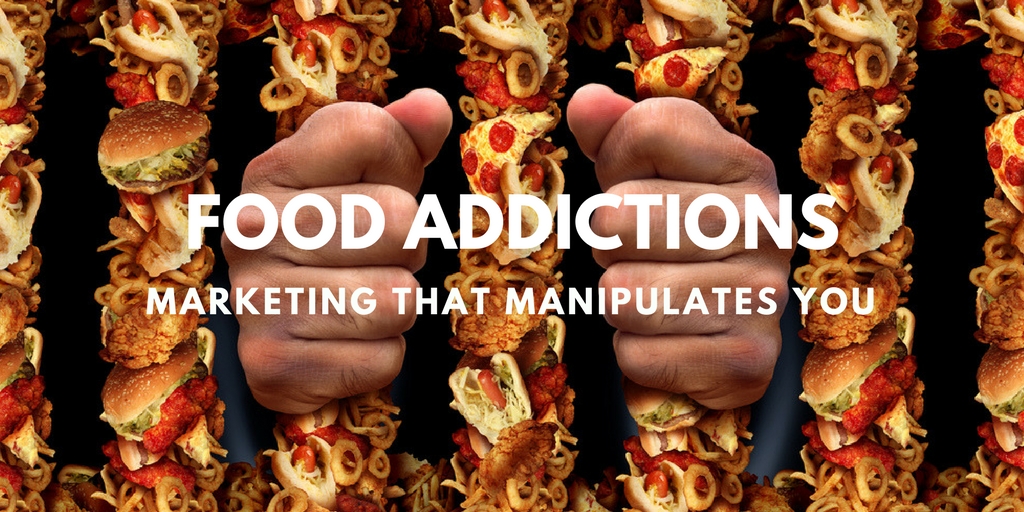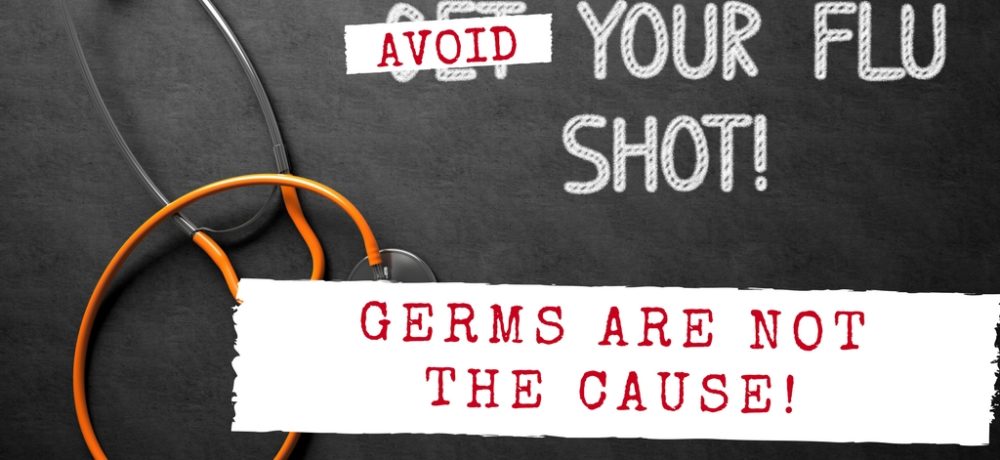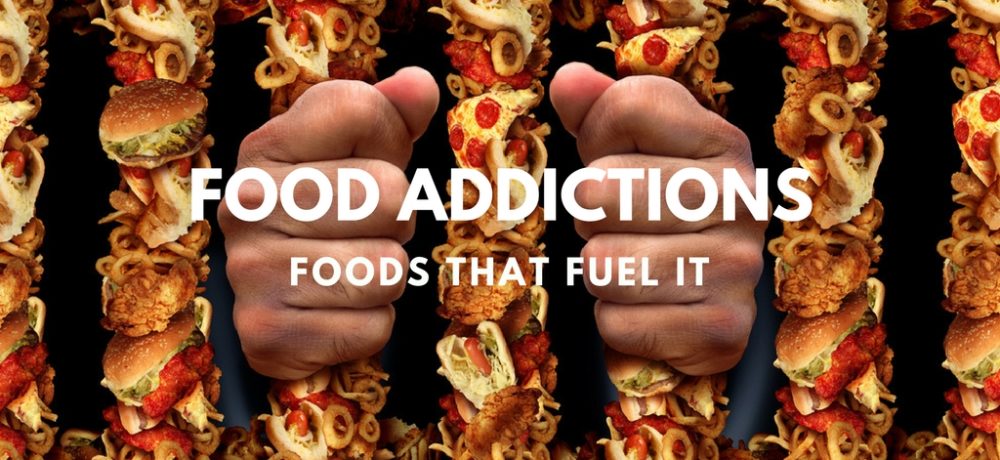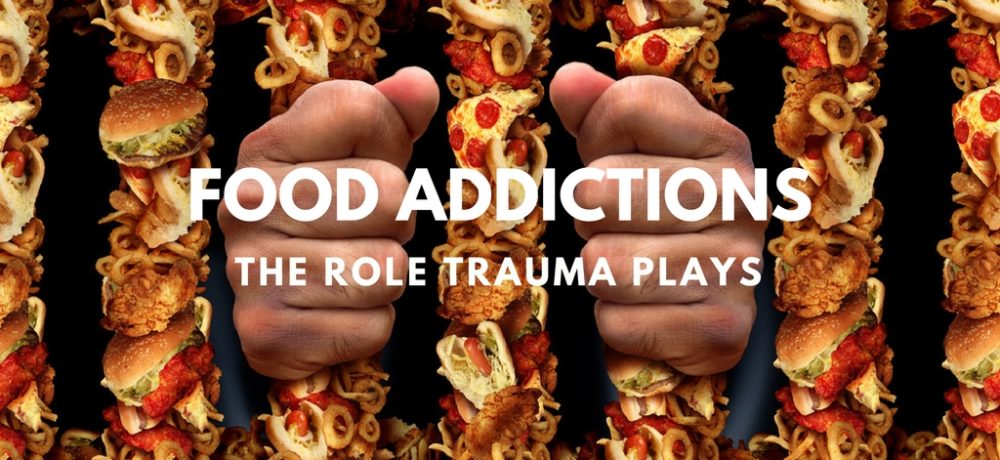It’s no secret that the “Big Food Industry” has impacted our economics, scientific communities (universities), and government/politics to gain power over them and us to market their products. The information provided in this section is not based on conspiracy theories but utilizes the work of Dr. Colin T. Campbell and Dr. Robert H. Lustig to connect these dots.
In order to gain a better understanding of why food addiction is so prevalent in American culture today, we have to look at these other factors that are a part of the problem. While our health comes down to our individual responsibility, we must be made aware of how the Big Food Industry has manipulatively convinced our universities and government into believing that their products are safe and good for us to consume on a daily basis. Once they gained power, they are now able to market their products freely without any government interference. Since the 1970’s the food industry can be labeled as, “Profit over People.” We will see how this became a reality at the Supreme Court level.
Did you miss Part I: The Role Trauma Plays?
Or Part II: Foods that Fuel it?
The “New” American Subculture of Eating
The consumption of food has historical, spiritual, biological and social realities. If you travel around the world, you will see that food is a vital component of how people organize and create meaning in their lives.
In American culture, it is no different because we use food as a way to celebrate special occasions, create social connection, provide us with raw materials to energize our bodies daily, etc. The food we eat has historical connections within our families that we carry on from generation to generation. You may even use recipes from your parents and/or grandparents to carry on your family traditions. We are forever connected to food no matter where you are from! It is a good thing!
Warning: Something has seriously changed over the past 100 or so years in the quality of our foods! They have become de-natured and filled with addictive substances!
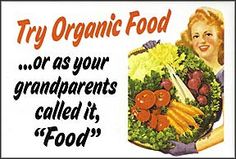 Traditional meals from natural food sources has been replaced at some level with what can be called, “human made chemical ridden foods.” Now our families get together during the holidays or other special occasions and eat food that has been refined/processed by the industrial food industry and has replaced organic natural foods that our ancestors ate for millennia.
Traditional meals from natural food sources has been replaced at some level with what can be called, “human made chemical ridden foods.” Now our families get together during the holidays or other special occasions and eat food that has been refined/processed by the industrial food industry and has replaced organic natural foods that our ancestors ate for millennia.
If you just observe the table at special occasions today, you may see more junk foods (sodas, sugar laden fruit juices, chips, candy, cakes, cookies, etc), so-called real food that is pre-made (e.g., instant potatoes, chemical filled dressings and/or stuffing, microwavable foods, etc.).
These special occasions have less and less real organic prepared foods to choose from and if they do, most often we add the refined sugars, refined flours, sweeteners, refined oils to them while cooking them. If you read Part 2, you already know how substances like sugar, wheat, dairy, sweeteners, etc all create biochemical changes in the gut and brain that drive addiction.
Events at our jobs, county fairs, restaurants, etc., seem to use these industrial foods for convenience, cheaper costs, and as a reward system to encourage us to eat them.
While celebrating special occasions with food is good in and of itself, it is the types of food that we are eating at these events that is only perpetuating food addiction. This is the “new” American subculture that is replacing traditional organic foods our relatives and families used to eat.
In fact, this new eating phenomena seems to be the “status quo” regardless of socio-economic status. People from all walks of life are consuming these so-called “comfort foods” without any forethought as to how these foods may impact our health.
For those of you who deal with food addiction, you may find it hard to go to these events and not experience peer pressure to consume these addictive and damaging foods.
For some, it just takes one bite and a food addiction relapse occurs. Why is that? Well your brain pathway that controls memory and pleasure are signaled once again when you consume these foods. Even looking and smelling these foods are triggers because you remember how good these foods tasted and the feelings of pleasure you experienced eating them.
You may tell yourself, “I will just eat one or a small portion.” This is our way of bargaining with ourselves to indulge in these foods, even if, it is just a small portion.
Others may say things like:
“a little will not hurt”
“are you one of those health nuts”
“you think you are too good to eat what we are eating”
This social pressure can be troublesome for any of us trying to eat healthier. We are wired for social acceptance and so many of us fall into the peer pressure and eat these unhealthy addictive foods. It does not help that we are told through food marketing to “enjoy” these foods that seem to hijack our minds and hold us captive.
The new American festive food culture is a strong force for all of us.  So what can you do to avoid eating these foods at social gatherings (or minimize the consumption of these foods)?
So what can you do to avoid eating these foods at social gatherings (or minimize the consumption of these foods)?
People are more open when you share your personal experience with food and health and may prevent more social pressure at these events.
The good news is that many people in our culture today are beginning to accept people’s food choices that are different from their own. Boundary setting is important because you should not feel like you have to eat food that makes you sick or potentially leads you towards another food addiction relapse. We would never tell someone who is in recovery from opiates to just have a little dose of an opiate and they will be alright. This analogy may seem too extreme, but food addiction is just as intense as an opiate addiction. For those who struggle with it know all too well that is the case.
To be fair, the new American festive food culture has been in the making since the beginning of the 20th century but really gained momentum in the 1970’s when the Big Food Industry rose to power having the legal, scientific, economic and political power to control university research, government nutrition guidelines and the general population through marketing.
Let’s see how the Big Food Industry rose to power and how it is a big part of the food addiction epidemic. The information provided in this article is intended to reveal to you what drives the food industry and how it is a part of this growing problem. Food addiction leads to a plethora of diseases and the food industry could care less about your health.
When we use the word Big Food industry, special attention will be given to the meat, dairy and sugar industries. The reason is because these industries are subsidized by the American government.
How Science Has Been Bought
Dr. Colin Campbell states, “the Golden Rule is he who has the gold makes the rules.” The food industry grosses about 1.46 trillion dollars per year and profits around 40-45% of that annual gross amount. So they have tons of dollars to spend and one of those areas they spend to spread their influence is in science.
We all want to put our trust in our academic institutions and the information they provide to us when studies are done in any particular field. However, the meat, dairy and sugar industries have many dollars to hold university scientists by the strings and have them perform studies that support the products they sell.
The National Academy of Sciences (NAS) have what is called, “The Food and Nutrition Board,” and they are strongly influenced by the meat, dairy and egg industries. Two of their leaders Bob Olson is a paid consultant by the egg industry and Alf Harper receives 10% of his income for providing services to food companies including dairy corporations. This is just one of many nutrition and science groups that have ties to the commercial world of the food industry.
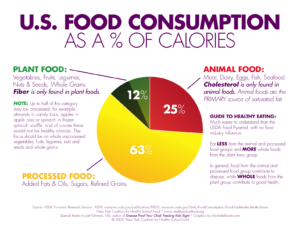 Scientists and American academic institutions have generated public confusion when it comes to what foods are healthy or unhealthy for us because of the special interests of the big food industry. Many scientists disagree with this form of scientific evil but do not have the financial power to fight these groups in court. We will see later what made this become a reality at the Supreme Court level.
Scientists and American academic institutions have generated public confusion when it comes to what foods are healthy or unhealthy for us because of the special interests of the big food industry. Many scientists disagree with this form of scientific evil but do not have the financial power to fight these groups in court. We will see later what made this become a reality at the Supreme Court level.
Studies are done by university scientists funded by “big food” to get the results they want to ensure product safety and quality. You have read some of the problems with sugar and dairy in Part 2 of this series, but this info does not get out to the general public. Even the effects of refined grains and conventionally raised animals cause health issues long-term. Check out the article Blood Sugar Mayhem to learn more about these food groups and their effects on elevated blood sugar levels.
Selective nutritional studies distort whether foods prevent or potentially cause diseases. For example, the focus placed on “cholesterol” related to heart disease has created a push for low fat diets by the medical industry, universities and the U.S. government. There is plenty of new unbiased scientific research showing that a low fat diet may lead to neurological, developmental and many other health issues. So many people follow this low fat recommendation and consume products that are low fat and still deal with the yo yo effect of weight gain and weight loss, including food addiction.
These selective studies that emphasize one type of nutrient in a food and determining whether or not a food is good or not good to consume creates confusion for all of us. One day you will hear that eggs are good for you and the next day they are bad for you. This scientific reductionism regarding food is driven by the big food industry.
To be fair, sometimes the study of mono-nutrients are helpful; but they must be studied in the broader context of what is the relationship between foods and disease.
Universities like Harvard University is no exception to this pseudo-science being done by the food industry. Harvard University’s Nurses Health Study looked at the level of fat intake by women and the cases of breast cancer. This study wanted to see if their was a connection between nutrition and cancer. The end result was that they did not find enough convincing evidence that a high fat diet has any connection with causing breast cancer. So they concluded that diet was not a preventative factor in the development of breast cancer.
The problem with this study and many other university studies like this is that they contain participants that primarily eat meat and dairy products, so the clear connection that organic fruits and vegetables when consumed in large amounts for many years can prevent cancer is tucked under the rug. Even the connection between a plant based diet and its ability to prevent and/or reverse heart disease is hidden from us. The work of Dr. Dean Ornish has clearly demonstrated that a plant-based diet can prevent and/or reverse heart disease.
The ongoing food industry having hegemonic control over university scientists continue and manipulate the public into believing that their products are safe to consume because of a Harvard University study reveals it or the National Academy of Sciences Food and Nutrition board says so.
As a result, you and many others consume foods that perpetuate the cycle of food addiction and the food industry goes to the bank dumping tens of billions of dollars in their accounts every year.
The answer to this growing epidemic is found in the produce section of the grocery store but the whole food industry does not have the marketing dollars to spread their message. We will explore more of this later.
Politics, Government & Big Food Industry
How did the scientific/medical community and government become controlled by the big food industry anyway? We must not be outraged by the government and our universities. The blame can be traced to a select few that started this whole process. We will explore what some of those names are, however, there are many more that are a part of this process but a few will be sufficient to prove the point.
Politics, government and the supreme court are touchy subjects but we need to understand how they take part in the big food industries rise to power. We are not going to dehumanize the individuals in this next section but these names are important. Besides the scientific community; politics, government and the court system helped to create this phenomena because of particular leaders that had the power to make these changes. We want to believe that we have the free choice to choose what to consume but we may not be as free as we think we are. The end game of the big food industry is profit and does not concern our well-being.
So when did corporations begin to gain this power over people? Like it was stated before, it has been an evolving reality since the early part of the 20th century but it really took a shift in the 1970’s.
Throughout American history, the United States government has interceded on behalf of the American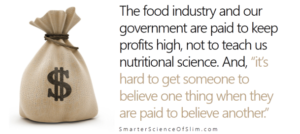 public to protect them from a corporate takeover. The creation of administrative groups and protection agencies were created to ensure the safety of the American people. These were created to ensure a balance between individual and corporate power. In the 20th century, things began to slowly change, in particular, the 1970’s.
public to protect them from a corporate takeover. The creation of administrative groups and protection agencies were created to ensure the safety of the American people. These were created to ensure a balance between individual and corporate power. In the 20th century, things began to slowly change, in particular, the 1970’s.
Power was shifted from the individual to corporations in the mid to late 1970’s. Where did it begin? A sociologist from City College Nicholas Freudenberg traces this shift back to the U.S. Supreme Court associate justice Lewis F. Powell Jr. Powell, who specialized in “business law” and “litigation.” He never was a state or federal judge, neither a constitutional lawyer.
Powell gained tremendous influence at the Supreme Court level among his peers. There were 4 specific cases that Powell decided with the majority that changed things for worst and corporations began to have the power they wanted over the American people.
These cases were:
1976: VA. State Pharmacy Board v. VA. Citizens Consumer Council
1976: Buckley v. Valeo
1978: First National Bank of Boston v. Bellotti
1980: Central Hudson Gas & Electric Corp. v. Public Service Commission
In the years between 1976-1980, the decisions Powell made at the Supreme Court level squashed any hope of keeping corporate power and influence in check. Corporate industry now had the ability to relentlessly market their products irrespective of the cost or utility of their products, whether it is personal or societal. To make matters worse, there is now virtually nothing left the public can do to reduce corporate influence.
As a result, the creation of the Big Food Industry (also, the rise of Big Pharma) became a reality. There were many other large industries who gained power as well, however, the food industry is the main concern for the context of this article.
Based on these rulings made by Powell and the rise of corporate power, nobel laureate Joseph Stiglitz points out that corporations can sue the federal government for restitution of profits lost from the enactment of any government policy. The irony is that the government cannot sue industries based on this paradigm shift.
In the 1970’s, the junk food industry began to take off and was one of the first signs of powerful influence the food industry had and continues to have on the American public. Their success is based on two things: 1) improved harvesting and food processing technologies by companies like Archer Daniels Midland and Cargill. 2) the enormous federal subsidies for corn, wheat, soy and sugar as part of the Food Bill, supplied the food industry with cheap products to produce their junk foods.
The Farm Bill originated back in 1933, this bill paid farmers not to grow certain crops and to kill off certain livestock. This reduced supply and increased food pricing, so farmers got to double dip.
The Farm Bill policy changed course in 1971, when President Richard Nixon thought that fluctuating food prices caused political unrest. Nixon then required his agricultural secretary, Earl Butz, to make food cheap.
Butz decided to stop the government handouts from the original Farm Bill and told the American farmers three things: 1) “row to row” 2) “furrow to furrow” 3) “Get big or get out”
Based on the decisions made by Earl Butz, the government would reimburse farmers for “quantity” and not “quality” and the farmer would make up the financial difference in the volume of the crop they produce.
Now you see how the Supreme Court and U.S. government are a big part of why we are in this mess today. Who knew that our court system and government would take part in this shift in how we look, buy and consume foods today that is perpetuating the cycle of food addiction.
You are NOT what you eat but what you DIGEST!
Corporate Takeover of Our Health
[/title][fusion_text]The Food and Nutrition Board which is a part of the Institute of Medicine of the National Academy of Sciences has the responsibility every 5 years to update the consumption of individual nutrients to the American public. This is where we get the governments perspective on the amount of nutrients we should consume on a daily basis. The Food and Nutrition Board has been making nutrient recommendations since 1943 when it established recommendations for the armed forces. The creation of the “RDA” (recommended daily allowances) for each individual nutrient became the gold standard for nutrition for the American public.
We should put our trust in the FNB right? Yes and No.
Yes, because it is part of the government and scientific community and what they recommend regarding nutrition is based on the newest research. Well at least that should be our assumption because it is for our health, protection and overall well being. However, the automatic trust we have for agencies like this should be questioned based on what has already been written here.
The FNB is also a part of the problem and is just another agency siding with the food industry. Hence, the other side of the answer posed, “No!”
How can this be?
Let’s use the example of “sugar” to show that the FNB is siding with industry and not the American people.
The Food and Agricultural Organization (FAO) and the World Health Organization (WHO) recommended that American’s should not consume more than 10% of added sugar daily. The FNB allows for 25% of sugar consumption daily! 2 1/2 times what the FAO and WHO recommend.
What is underneath this gap in sugar consumption percentage? Why would certain government and scientific organizations differ from others?
Politics, money and special interest!
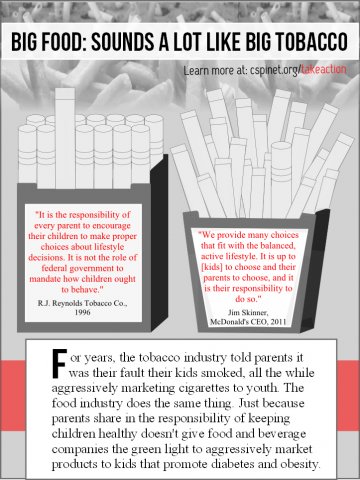 The U.S. Sugar Association and World Sugar Research Organization created a lobbying campaign to discredit the WHO’s recommendation for daily sugar consumption at 10%. A London newspaper called, “The Guardian” claims that they were trying to bring the WHO to its knees. The U.S. SA and WSRO and their lobbying group threatened to take away their 409 million dollars of funding from the WHO when addressing this concern to the U.S. Congress.
The U.S. Sugar Association and World Sugar Research Organization created a lobbying campaign to discredit the WHO’s recommendation for daily sugar consumption at 10%. A London newspaper called, “The Guardian” claims that they were trying to bring the WHO to its knees. The U.S. SA and WSRO and their lobbying group threatened to take away their 409 million dollars of funding from the WHO when addressing this concern to the U.S. Congress.
The irony is that the U.S. panel for the FNB receive funding from M&M Mars Candy and a consortium from the soft drink companies. They are also funded by the Dannon Institute, Coca Cola corporation, Taco Bell, Burger King, Nestle, Pfizer, Roche Vitamins and all these big industries had an influence on the FNB report regarding daily sugar (and protein) consumption. FNB sided with the U.S SA and WSRO groups that undermined the WHO recommendations.
In fact, 6 of the 11 committee members of the FNB were shown to have ties to the dairy industry. This is a scary thought! Big Food clearly has the power of influence!
The FNB report guides the “Food Guide Pyramid” label and other nutrition education programs. Primary schools, university health professional programs and other community based programs follow the FNB report (since 2002).
How can we and other educational organizations follow a report that disregarded the WHO stance against sugar and who sided with industry?
The problem stems from the food industry and the control they have over the American government and American universities. The food industry lobbies to get what they want from a government/legislative standpoint and hires public figures in academia. Holding the government and academy by the strings, allows the food industry to push their agenda. University professors are hired by the food industry who then help to create political policies to push these agendas through at the congressional level.
To make matters worse, the USDA (U.S. Department of Agriculture) provide school lunches that are dependent on government subsidized foods. Foods that are driven by the wheat, dairy, soy, corn, sugar and animal food industries. It is no wonder that our children are set up for food addiction. In Part 2 of this series and in the article, “Blood Sugar Mayhem,” we saw how foods from some of these sources cause the food addiction epidemic and create disease in our body over time.
Now you have a general knowledge of how the food industry rose to power from the court system, elected government leaders, to political lobbying and through hiring academics to push their agendas and have power over the American people. All of these threads connect to the marketing strategies the food industry does to lure us to consume their products.
How Marketing Impacts Food Addictions
The food industry is one of the most influential and profitable in American economics and around the world. Like we mentioned before, the food industry profits 40-45% of their annual sales. For example, Kraft makes approximately 30 billion per year; the Dannon group makes about 15 billion; McDonald’s makes about 15+ billion per year; Wendy’s about 3 billion per year, etc. These numbers were based on an analysis from 1970-1995. The food that is purchased by individuals, families, businesses and government exceeds 700 billion dollars per year.
As you can see, the food industry has plenty of capital to utilize to market their products to the American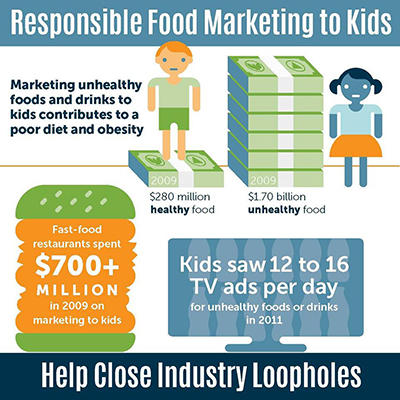 public and around the world. They pay high dollar to advertise their health benefits as well. In fact, the food industry hires scientists from universities to keep tabs on anything that would harm their industry.
public and around the world. They pay high dollar to advertise their health benefits as well. In fact, the food industry hires scientists from universities to keep tabs on anything that would harm their industry.
Let’s use the dairy industry to show the power the food industry has to market their products.
Back in 2003, a Dairy Industry group called the Dairy Management Inc. had a 165 million dollar budget to market their dairy products. You see the dairy industry market their milk products with slogans like, “got milk” that have athletes and/or other famous celebrities promoting their products. They spend this money to market in our school systems (influence students, teachers, parents, school service professionals, etc.).
If you read Part 2 of this series, you know that pasteurized dairy is far from healthy and is very addictive. To make matters worse, they add high fructose corn syrup or other sugars to their products that causes damage to the gut and the brain, along with, other tissue damage throughout the body. Remember those casomorphins? Addiction city!
The dairy industry even has a medical advisory board of doctors, academics and other health professionals. They appear in the media providing science based statements supporting the health benefits of their products. For example, to help build strong bones and teeth and to prevent osteoporosis.
It is clear in Part 2 and our other article, “Blood Sugar Mayhem” that industrial made dairy foods are not healthy. They lead to many pathologies over time and continue to perpetuate food addiction. The wedding between the sugar industry and dairy industry create these addictive products.
When you have the food industry pulling the strings in the scientific world to manipulate studies supporting their own ends, then you have a misinformed American public, government and school system. For the common person who is not educated in scientific terminology, the ability to read and discern what is truth in these so-called studies deeming the products safe is practically impossible. So we just trust the professionals viewpoints that we read in the newspaper; online medians like social media; commercials; daily and/or nightly news reports; etc.
If dairy products are so safe and healthy, then why are so many people lactose intolerant, have allergens to them, still suffer bone loss as we age, etc.? Also, why are so many people addicted to things like cheese? Or foods that contain lots of milk and added sugar?
There are numerous ways that the food industry lures us into consuming their products.
Coca-colas marketing campaign “Open Happiness” that came out in 2009 skyrocketed sales.
McDonald’s marketing campaign “I’m Lovin It” has been their marketing strategy for many years.
The commercials created by companies like Coca-Cola and McDonald’s contain people having a good time and we make the association that these products will bring us some kind of contentment/happiness like the people on the screen and yet when we consume them, they only give us temporary feelings of pleasure and are void of what they promise.
The problem with this kind of marketing is that it equates happiness with pleasure and we fall for it many times. These manufactured foods work on our dopamine centers (reward center/pleasure center) in our brains and leads to the overproduction of dopamine levels in the brain and decreases our serotonin levels(contentment/happiness center) in the brain. This creates depression and so we may find ourselves over-eating as a result.
Have you fallen for it?
The food industry uses advertisement slogans like:
“For a limited time”
“Buy one, get one free”
“Super-size me”
“All you can eat”
These slogans work on those of us who have a “fear of missing out” or want to get the best deal when these addictive foods are advertised. Getting more for your money is pretty tempting and often times is a way to bargain with ourselves to go get what food is being advertised.
The images and music played during food commercials work on our senses while watching them and our memory center (hippocampus) is stimulated and brings back the taste and smell of these delicious addictive foods. You can say that the commercials and our own brain is playing tricks on us and it is hard to resist every time.
The food industry (even the so-called healthy organic products on the market today) uses food labeling to get us to buy their products as well:
“Fat free”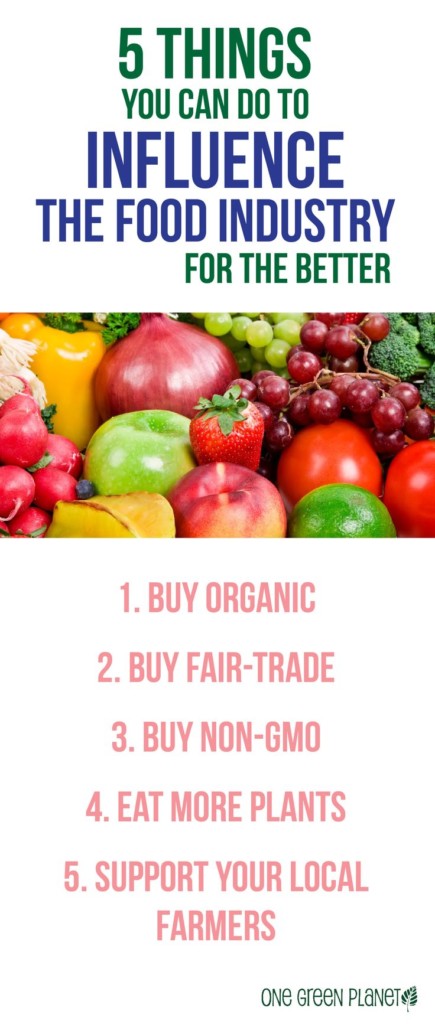
“All Natural”
“Less fat”
“Sugar free”
“Gluten free”
“Dairy free”
“Non-GMO”
“Vegan”
“Organic”
“No MSG”
Many more…
The craftiness of the food industry still tries to find ways to put ingredients in their products to get you coming back for more! Whether you purchase the bag of Frito corn chips or the organic corn chips, they are both addictive foods. The organic food industry is making tons of profit using “food labeling” as a means to do so that piggy backs off other non-organic companies. In fact, most of what you find already pre-packaged in any form, whether it be, organic or not, perpetuates food addiction.
You may find yourself being able to eat a whole bag of chips regardless of it being organic or not. The food industry is there to get you to buy and consume more and “food labeling” is one of the new forms to do so. Junk food is junk food. Don’t be fooled by this form of food propaganda to make you feel like you are making healthier choices buying organic. It is all about marketing and not your health in the long run.
Food labeling is important, but when it comes to unnatural man-made foods, it does not matter if it is organic or not. It is just a way for us to “have our cake and eat it too.” Companies know this about us and are capitalizing on it in a big way today.
Marketing in the forms discussed in this section have taken a hold of us and we are bombarded by them every day. It takes a massive amount of will power to resist the temptations presented to us through all these forms of advertising.
When you come to realize that these products do not contain the key to happiness, infringe upon your ability to make healthy choices, lead to disease over time, increase the profits of those selling them, make you depressed, increase weight gain and leave you broke, this may be enough to convince you that it is all marketing strategies to keep you addicted to these unhealthy foods.
You can break free from this marketing strategy by training your mind to believe that they are lies because they are lies. These foods are not safe or healthy. The junk food industry, fast food industry, dairy industry, oil industry, wheat industry, sugar industry, meat industry and others all participate in these lies.
Probably the most difficult aspect to help you break free from these food industries is “cost.” Like we discussed earlier, some of these industries are subsidized by the U.S. government and have made it easier for companies to sell their products for less with the exception of the organic industry. This economic challenge is harder to overcome for those who are poor and cannot afford healthier organic whole foods since they are expensive and are not subsidized by the U.S. government.
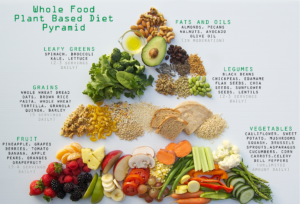 The hope is that you now see the sociological patterns of modern life that augments food addiction. The political, economic, scientific and marketing reality that has created the food industry that is literally taking over our minds, emotions, health and money. A system designed to profit corporate food companies without any concern for your health. It is creating this food addiction epidemic in our children as well and influences all people in our culture. You and your family have to make the decision to overcome this food addiction epidemic and work together to eat healthier foods that leave you nourished and satisfied. Eating food as the means to live and not live to eat.
The hope is that you now see the sociological patterns of modern life that augments food addiction. The political, economic, scientific and marketing reality that has created the food industry that is literally taking over our minds, emotions, health and money. A system designed to profit corporate food companies without any concern for your health. It is creating this food addiction epidemic in our children as well and influences all people in our culture. You and your family have to make the decision to overcome this food addiction epidemic and work together to eat healthier foods that leave you nourished and satisfied. Eating food as the means to live and not live to eat.
Now that you have been informed about this system creating and perpetuating food addiction, you can begin to make better decisions for yourself. Do your own research and empower yourself to make healthier decisions that are not dictated by crafty marketing schemes. Once you look beyond the advertising slogans and misleading food labels, you will be empowered to avoid these foods and choose to eat healthy organic real food.
The connection between trauma (Part 1), addictive foods (Part 2) and the Big Food Industry (Part 3) makes the issue of food addiction a complex reality. We hope all three parts have informed you enough to take a multi-faceted approach to this epidemic and lead you down a path towards recovery! We can overcome!
You made it! You have now read all three parts to food addiction!
What was helpful in these articles?
What are you willing to change now?
What route do you need to take to get you on a path towards recovering from food addiction?
What stood out to you in these articles?
What questions do you have?
What would you like for us to write about?
What did not make sense in these articles?
What section was the most helpful for you?
Did you like this topic being in three separate parts?
May you experience freedom from food addictions!
 To Health & Vitality,
To Health & Vitality,
John Nardozzi
Enzyme Nutritionist & Blog Writer
Bibliography
Campbell, Colin, T. PhD. The China Study. Dallas, TX. BenBella Books, Inc. 2006.
Lustig, Robert, H. The Hacking of the American Mind: The Science Behind the Corporate Takeover of Our Bodies and Brains. New York, NY. Avery. 2017.
National Research Council. Diet, Nutrition, and Cancer. Washington, DC: National Academy Press, 1982.
U.S. Senate. “Dietary goals for the United States, 2nd Edition.” Washington, DC: U.S. Government Printing Office, 1977.
Belanger CF, Hennekens, CH, Rosner B, et al. “The Nurses Health Study.” Am. J. Nursing (1978): 1039-1040.
Marchione M. “Taking the long view; for 25 years, Harvard’s Nurses’ Health Study has sought answers to women’s health questions.” Milwaukee Journal-Sentinel July 16, 2001: 01G.
Smith-Warner SA, Spiegelman D, Yaun S-S , et al. “Intake of fruits and vegetables and risk of breast cancer: a pooled analysis of cohort studies.” JAMA 285 (2001): 769-776.
Putnam JJ and Allshouse JE. “Food Consumption, Prices, and Expenditures, 1970-95.” Washington, DC: United States Department of Agriculure, 1997. Cited in: Information Plus. Nutrition: a key to good health. Wylie, TX: Information Plus, 1999.
Dairy Management Inc. “What is Dairy Management Inc.?” February 12, 2004. Accessed at http://www.dairycheckoff.com/whatisdmi.htm.
Dairy Management Inc. Press Release. “Dairy checkoff 2003 unified marketing plan budget geared to help increase demand in domestic and international markets.” Rosemont, IL: January 24, 2003. Accessed at http://www.dairycheckoff.com/news/release-012403.asp
United States Department of Agriculture. “Report to Congress on the National Dairy Promotion and Research Program and the National Fluid Milk Processor Promotion Program.” 2000. Accessed at http://ams.usda.gov/dairy/prb_intro.htm.IN
Powell A. “School of Public Health hosts food fight: McDonald’s, dairy industry, dietary reformers face off at symposium.” Harvard Gazette: 24 October 2002. Accessed at http://www.news.harvard.edu/gazette/2002/10.24/09-food.html
Food and Nutrition Board, and Institute of Medicine. “Dietary Reference intake for energy, carbohydrates, fiber, fat, fatty acids, cholesterol, protein, and amino acids (macronutrients).” Washington, DC: The National Academy Press, 2002. Accessed at http://www.nap.edu/catalog/10490.html?onpi_newsdoc090502
Boseley S. “Sugar Industry threatens to scupper WHO.” The Guardian April 21, 2003.
Brundtland GH. “Sweet and sour; The WHO is accused by the sugar industry of giving unscientific nutrition advice. But its recommendations are based on solid evidence, says Gro Harlem Brundtland.” New Scientist, May 03, 2003: 23.
Chaitowitz S. Court rules against USDA’s secrecy and failure to disclose conflict of interest in setting nutrition policies. Physicians Committee for Responsible Medicine. Accessed January 27, 2004. Available from http://www.pcrm.org/news/health001002.html.
National Institute of Health. NIH Disease Funding Table: Special Areas of Interest. Accessed August 18, 2003. Available from http://www.nih.gov/news/findingresearchareas.htm.
Young EA. “National Dairy Council Award for Excellence in Medical/Dental Nutrition Education Lecture, 1992: perspectives on nutrition in medical education.” Am. J. Clin. Nutr. 77 (2003): 288-291.
Baird P. “Getting it right: industry sponsorship and medical research.” Can. Med. Assoc. Journ. 168 (2003): 1267-1269.
Chopra SS. “Industry funding of clinical trials: benefit or bia?” JAMA 290 (2003): 113-114.
Healy D. “In the grip of the python: conflicts at the university-industry interface.” Sci. Engineering Ethics 9 (2003): 59-71.
Olivieri NF. “Patients’ health or company profits? The commercialization of academic research.” Sci. Engineering Ethics 9 (2003) 29-41.
Johnson L. “Schools report research interest conflicts.” The Ithaca Journal October 24, 2002: 3A.
Associated Press. “Survey: many guidelines written by doctors with ties to companies. “ The Ithaca Journal Feb. 12, 2002.
Bok D, The Politics of Happiness: What Government Can Learn from the New Research on Well-Being. Princeton University Press, Princeton (2010).
Layard R, Happiness: Lessons from a New Science. Penguin, New York (2005).
Freudenberg N, Lethal but Legal. Oxford University Press, New York (2014).
Powell LJ, “Attack on the American Free Enterprise System” (1971). http://reclaimdemocracy.org/powell_memo_lewis/
Stiglitz J, “The Secret Corporate Takeover.” Project Syndicate (2016). http://www.project-syndicate.org/commentary/us-secret-corporate-takeover-by-joseph-e-stiglitz-2015-05
Federal Trade Commission, “In the Matter of Sugar Information, Inc. et al.” Federal Trade Commission, New York (1972), 711-24.
Scola N, “Exposing ALEC. How Conservative-Backed State Laws Are All Connected.” Atlantic, April 14, 2012. http://www.theatlantic.com/politics/archive/2012/04/exposing-alec-how-conservative-backed-state-laws-are-all-connected255869/
Wolin S, Democracy Inc.: Managed Democracy and the Specter of Inverted Totalitarianism. Princeton University Press, Princeton (2010).
Gilens M, Affluence and Influence. Princeton University Press, Princeton (2014).
Millward Brown, “Millward Brown Spreading Happiness with Coca-Cola” (2012). http://www.youtube.com/watch?v=deDRLmV-gpw
Eyal N, Hooked: How to Build Habit-Forming Products. Penguin, New York (2014).
Andreyeva T. et al., “The Impact of Food Prices on Consumption: A Systematic Review of Research on the Price Elasticity of Demands for Food.” Am. J. Public Health 100, 216-22 (2010).
Soto PL et al., “Dopamine D2-Like Receptors and Behavioral Economics of Food Reinforcement.” Neuropsychopharmacology 41, 971-8 (2016).
Waterfield B, “Sugar Is ‘Addictive and the Most Dangerous Drug of the Times,’” Telegraph, Sept. 17, 2013. http://www.telegraph.co.uk/news/worldnews/europe/netherlands/10314705/sugar-is-addictive-and-the-most-dangerous-drug-of-the-times.html[/fusion_text]

